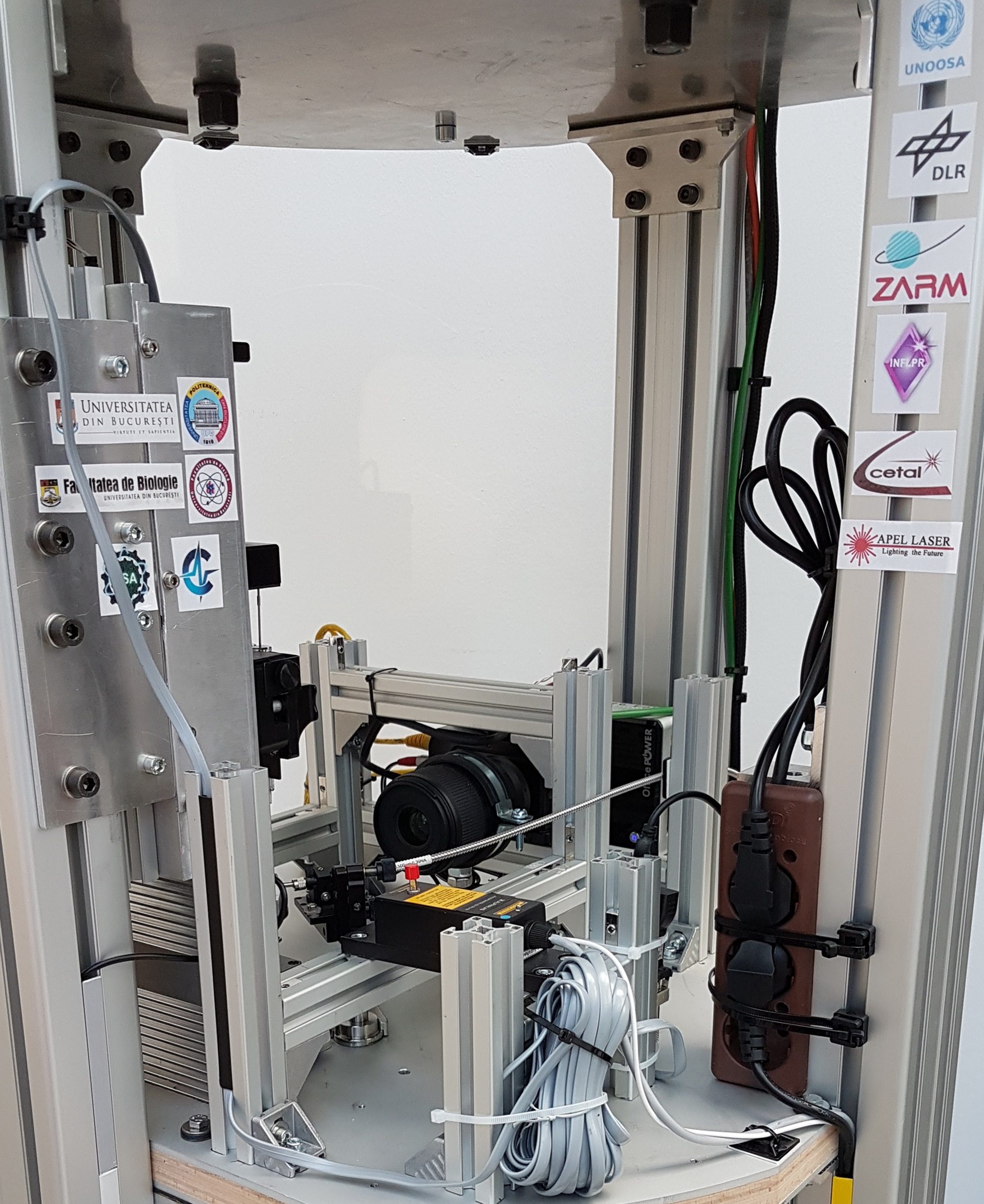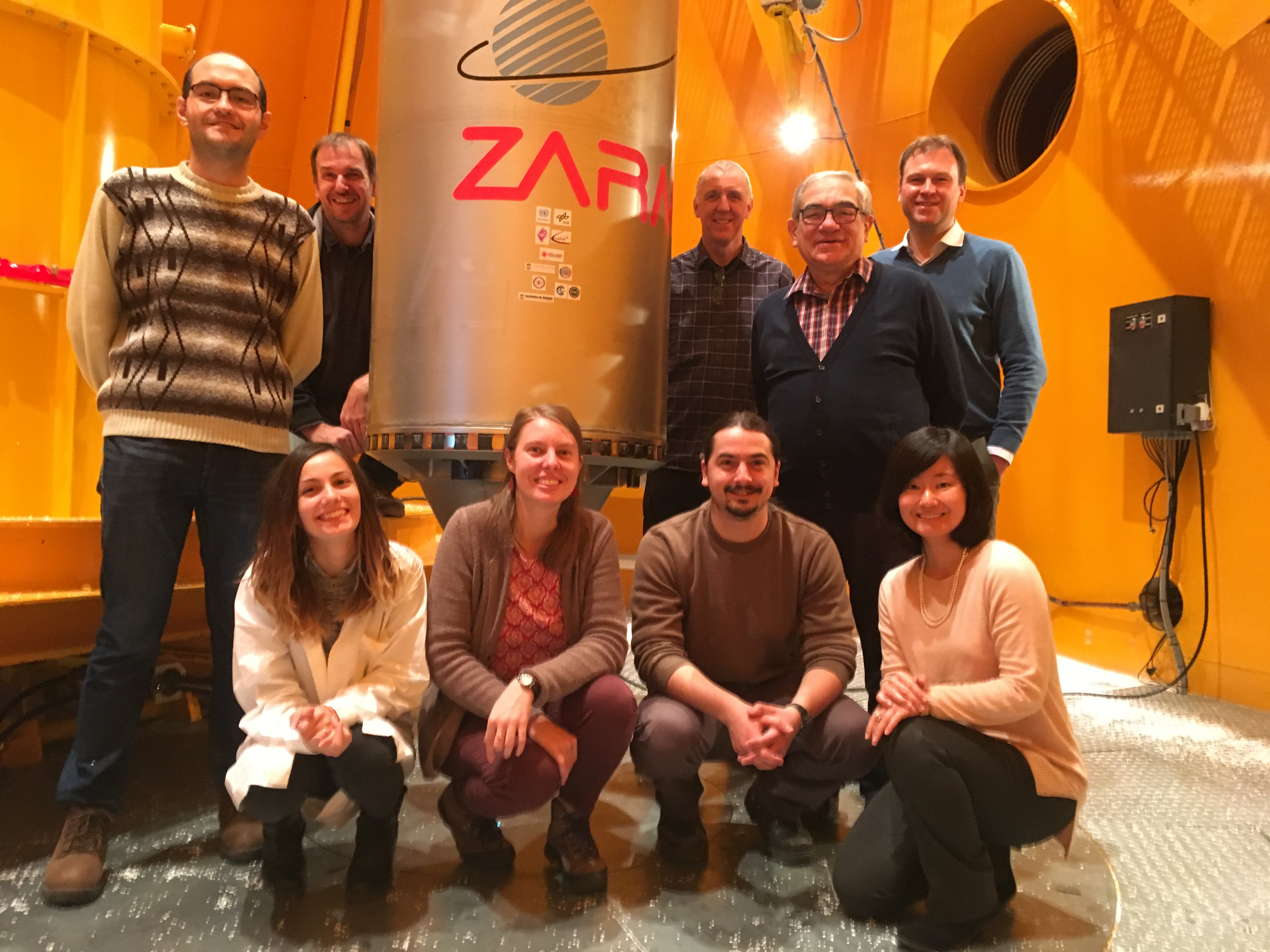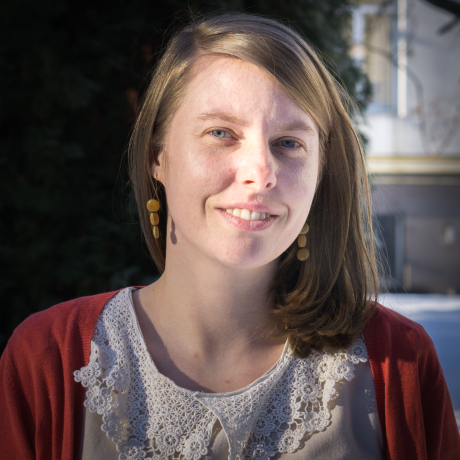Experimental campaign of DropTES 2018 project at ZARM Drop Tower in Bremen
The experimental campaign of the project entitled “Interaction of laser exposed medicine droplets with target surfaces under microgravity conditions” took place at the Bremen Drop Tower, Germany, from the 19th of November until the 1st of December 2018. The studies have been carried out under the aegis of the United Nations Office for Outer Space Affairs (UNOOSA) within the Drop Tower Experiment Series (DropTES) Fellowship Programme. Four experiments were conducted in dropping mode, sponsored by the German Aerospace Center (DLR) Space Administration and the Center of Applied Space Technology and Microgravity (ZARM).

The idea of the project was based on research developed by the Laser Spectroscopy Optics Group of the National Institute for Laser, Plasma and Radiation Physics (INFLPR). The DropTES 2018 team involved three PhD fellows, Ágota Simon (Laser Department, INFLPR / Faculty of Physics, University of Bucharest), Bogdan-Ștefăniță Călin (Center for Advanced Laser Technologies (CETAL), INFLPR / Faculty of Applied Sciences, University Politehnica of Bucharest) and Dumitru-Cristian Trancă (Faculty of Automatic Control and Computers, University Politehnica of Bucharest) as well as 1 MSc student, Ioana-Simona Stroescu (Faculty of Biology, University of Bucharest), led by Prof. Mihail-Lucian Pascu, the head of the Laser Spectroscopy Optics Group. The activities devoted for these experiments were covered by grants of the Romanian National Authority for Scientific Research and Innovation in the frame of CNCS/CCCDI-UEFISCDI, project PN-III-P2-2.1-PED-2016-0446 within PNCDI III as well as by the Ministry of Education via NUCLEU project PN 1813/2018. The DropTES 2018 team was also sponsored by APEL LASER.

With a height of 146 m, the ZARM Drop Tower offered high quality conditions of weightlessness, comparable to one millionth of the Earth’s gravitational force (10-6 g) lasting » 4.5 s. The team performed microfluidic (surface tension and contact angle) as well as optofluidic (laser induced fluorescence) measurements on unexposed and real time laser exposed 5 µl medicine droplets under such conditions. The obtained results, which are still under detailed interpretation, are promising, particularly for further possible applications in long term missions on the International Space Station.


